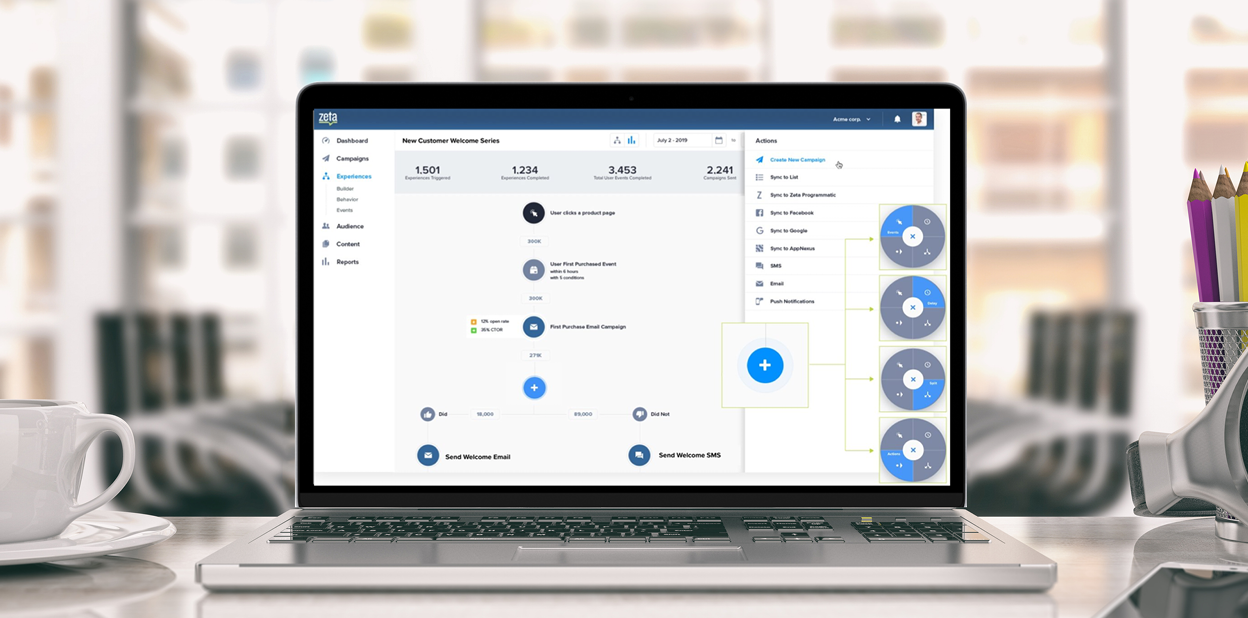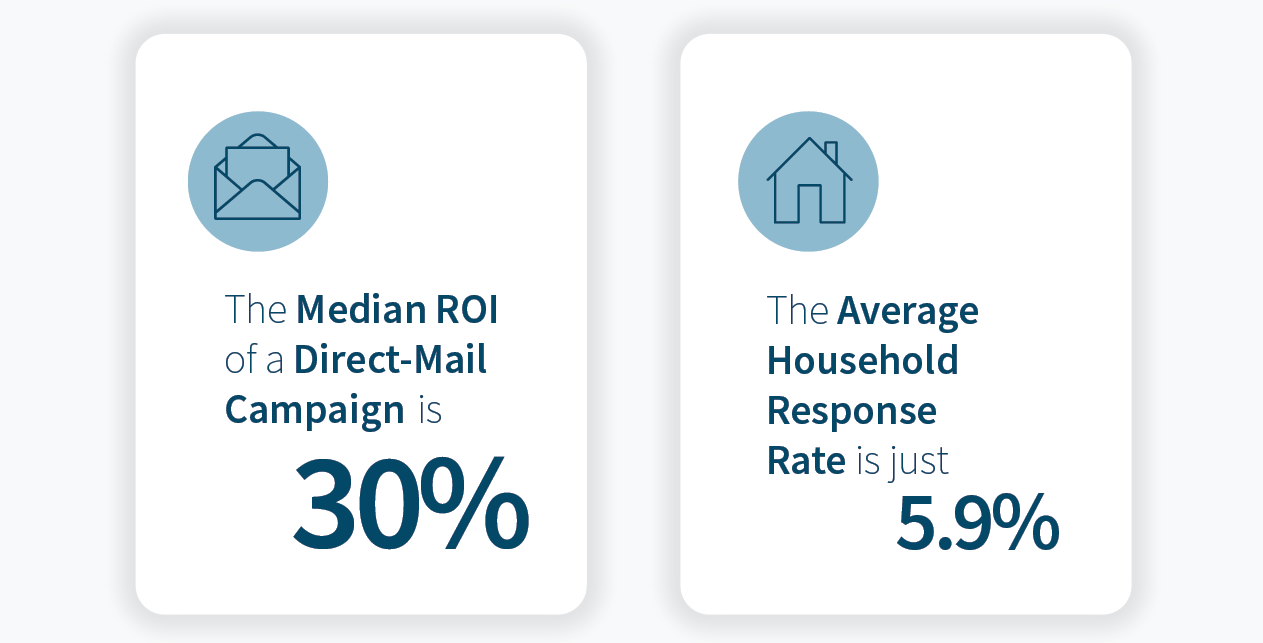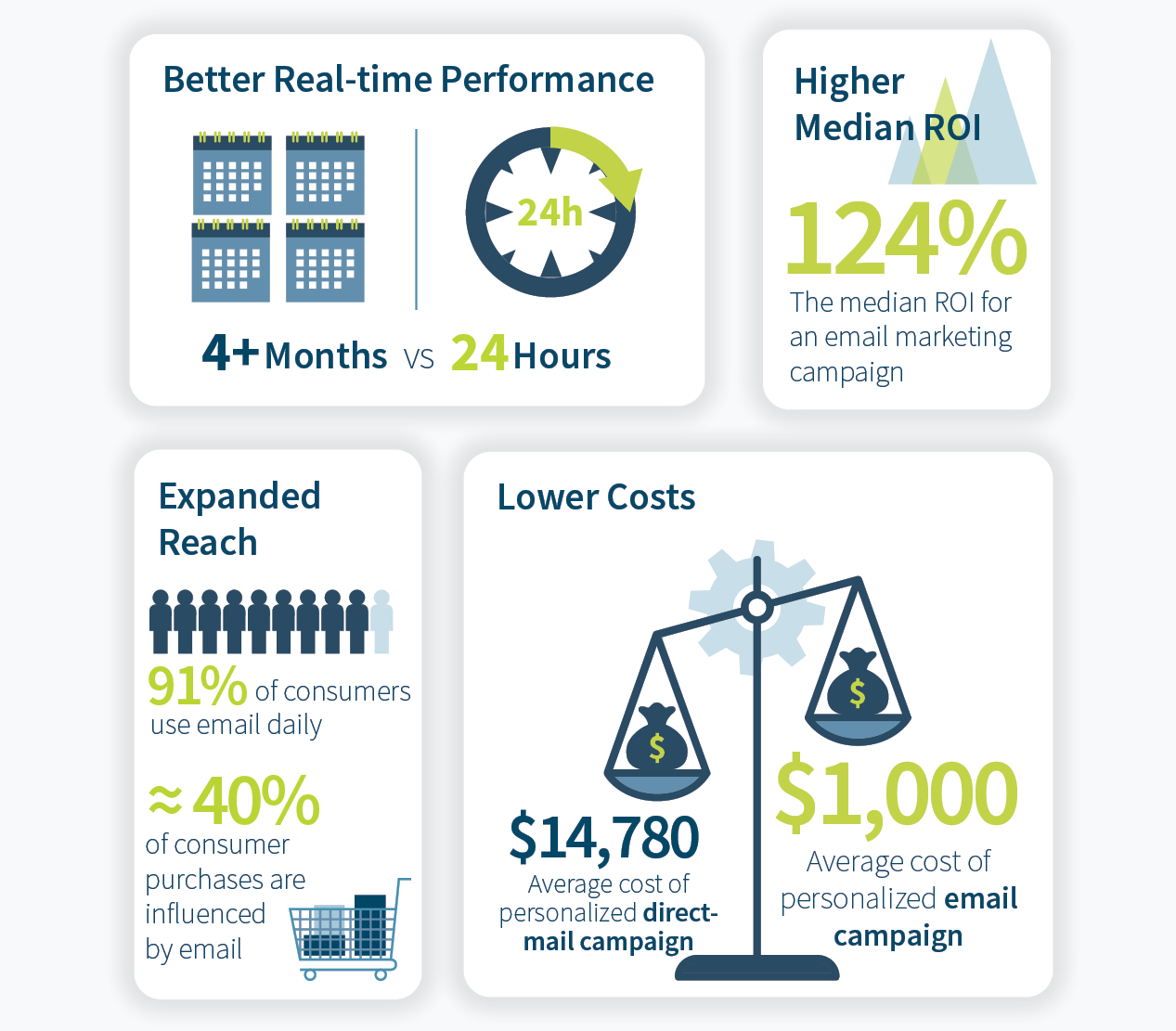
Articles | December 31, 2020 | 5 min read
3 Approaches to Omnichannel Every Marketer Should Know
Many brands struggle to acquire and retain new customers. But do you know why? It’s because they’re taking a disjointed, cross channel approach to acquisition. In other words, they’re relying on siloed or incomplete data to obtain siloed or incomplete insights that make it impossible to optimize their engagement and acquisition in a meaningful way. If you’re looking to avoid issues related to engagement and acquisition, you need to incorporate one of the following three approaches to omnichannel.
Done properly, these three approaches to omnichannel will make it possible for you to find the right customers in the right channel and at the right time—the moment of consideration. And if you can do that, you’ll help your brand bolster engagement, acquisition, and retention.
It costs more than money to acquire customers—it costs time, energy, and talent.
The cumulative cost of acquisition is especially high (sometimes as much as 10X higher) when it’s compared to the total cost of customer retention.
This disparity is why smart, successful companies that are built to endure for decades make customer retention their primary focus and customer acquisition their secondary focus. The leaders of these businesses know it’s better to keep existing customers loyal while capturing a few new customers here and there, than it is to offset a high churn rate by capturing new customers by the boatload.
This virtuous customer cycle is the goal of every company.

Even though retention should usurp acquisition in the way of importance, customer acquisition will always be a primary objective for any marketing executive. Therefore, keeping the cost of acquisition as low as possible is critical.
To that end, marketers and the brands they work for must know how to use omnichannel as a tool for lowering customer acquisition costs. Omnichannel makes it possible to maximize prospect data across channels to take advantage of every touchpoint along the customer journey.
Any information you have on prospects (be it known or unknown data) should be enriched and used to engage in AI-modeling. To be successful in terms of obtaining actionable insights about individual customers requires a strong ability to identify individual prospects and their behavior through deterministic attribution.
To thrive with omnichannel acquisition, you not only need high-quality data, but you need intelligent strategies for using that data. Effective strategies can be built using a number of approaches including geo-fencing, lookalike modeling, and the building of intender audiences.
Everything starts with your company’s website—if this isn’t buttoned up, your omnichannel acquisition process will never, ever take flight. That means you can’t have any breaks in your on-site conversion path, and—if you do— you must be able to re-engage prospects during their onsite visit to complete their conversion.
After your site, you must focus on activating and engaging through email. Email is personal, it performs, and it will deliver the best acquisition ROI for your brand. Yes, it might be lacking in reach (unless you have access to permissioned, third-party audience), but what it doesn’t offer in breadth it more than makes up for in efficiency.
Finally, you need a substantial social and programmatic presence.

For marketers and brands that make use of direct mail for customer acquisition, email is a channel that can’t be ignored. Why?—Because no channel supports and amplifies the impact of direct mail like email.
On its own, direct mail comes with costly limitations in that it’s both expensive to implement and slow to drive results.


Used to complement each other, email and direct mail possess a multiplier effect that makes it easier for marketers to do big things when it comes to acquisition. But what does a unified strategy actually look like? In most circumstances, the strategy will feature a few components:
To build this strategy, you must create one, unified mailing list that incorporates both a prospects physical address as well as their email address. Without this unified list, there’s no way of guaranteeing prospects receive the right messaging in both channels. You must also ensure there’s continuity of offers across both direct mail and email—any variation in promotion, design aesthetic, or copy can undermine the likelihood of a conversion.
Acquisition cost doesn’t need to be a sunk cost. You can reduce the cost of acquisition over time by maximizing the lifetime value of each customer acquired. So, how do you maximize that lifetime value?—By re-engaging and cross selling customers.
To succeed with re-engagement and cross selling, it’s important to make the distinction between an active and inactive customer. In other words, you need to create a clear criteria for each classification of customer. Doing so will make it easier to develop and deploy different strategies that cater to each audience. With active customers, those strategies will center around light engagement across carefully selected channels. With inactive customers, those strategies will incorporate heavier engagement that’s targeted at specific types of individuals (e.g. one-time shoppers) using particular channels.
First and foremost, you need rock-solid customer data.
Great data is how you can identify:
Once you’ve collected and collated your data, you’ll need to enrich it with additional signals—geographic signals, behavioral signals, etc.
Here’s what you and your brand will need need to succeed.
Centralized data management will allow you to leverage the existing information you have on customers to find new shoppers with efficiency.
If you don’t have a customer data management solution already, you need to acquire one. Make sure it comes with an easy, painless implementation process. Something you can get up and running quickly so you can isolate and scale high-performing combos.
By constantly refreshing your existing customer data with new inputs and signals, you’ll be more successful in finding, engaging, and acquiring new customers.
Artificial intelligence is the only effective way for your brand to model and enrich its existing customers data.
It’s not enough to simply “reach out” to prospective buyers on your terms. You need to be able to use real-time signals to connect with new customers on their terms. In moments and through the channels that they want to utilize for engagement.
The only way to accurately and effectively track your progress improving acquisition through omnichannel strategies is with deterministic measurement.
Understanding the path people take—the channels people engage with your brand and the sequence in which they travel through those channels. In many cases, getting a clear picture of this journey for individual customers will require an exceptional CDP.
To learn more about any of the approaches to omnichannel discussed in this blog, or how your brand can better deploy omnichannel strategies to acquire and retain new customers, talk to Zeta.
Done properly, these three approaches to omnichannel will make it possible for you to find the right customers in the right channel and at the right time—the moment of consideration. And if you can do that, you’ll help your brand bolster engagement, acquisition, and retention.
#1 – Pure omnichannel acquisition
It costs more than money to acquire customers—it costs time, energy, and talent.
The cumulative cost of acquisition is especially high (sometimes as much as 10X higher) when it’s compared to the total cost of customer retention.
This disparity is why smart, successful companies that are built to endure for decades make customer retention their primary focus and customer acquisition their secondary focus. The leaders of these businesses know it’s better to keep existing customers loyal while capturing a few new customers here and there, than it is to offset a high churn rate by capturing new customers by the boatload.
This virtuous customer cycle is the goal of every company.

Using omnichannel to reduce customer acquisition costs
Even though retention should usurp acquisition in the way of importance, customer acquisition will always be a primary objective for any marketing executive. Therefore, keeping the cost of acquisition as low as possible is critical.
To that end, marketers and the brands they work for must know how to use omnichannel as a tool for lowering customer acquisition costs. Omnichannel makes it possible to maximize prospect data across channels to take advantage of every touchpoint along the customer journey.
Keys to successful omnichannel acquisition process
You need a good data
Any information you have on prospects (be it known or unknown data) should be enriched and used to engage in AI-modeling. To be successful in terms of obtaining actionable insights about individual customers requires a strong ability to identify individual prospects and their behavior through deterministic attribution.
You need good data strategies
To thrive with omnichannel acquisition, you not only need high-quality data, but you need intelligent strategies for using that data. Effective strategies can be built using a number of approaches including geo-fencing, lookalike modeling, and the building of intender audiences.
You need to activate in the right channels
Everything starts with your company’s website—if this isn’t buttoned up, your omnichannel acquisition process will never, ever take flight. That means you can’t have any breaks in your on-site conversion path, and—if you do— you must be able to re-engage prospects during their onsite visit to complete their conversion.
After your site, you must focus on activating and engaging through email. Email is personal, it performs, and it will deliver the best acquisition ROI for your brand. Yes, it might be lacking in reach (unless you have access to permissioned, third-party audience), but what it doesn’t offer in breadth it more than makes up for in efficiency.
Finally, you need a substantial social and programmatic presence.

#2 – Use email to improve direct mail acquisition
For marketers and brands that make use of direct mail for customer acquisition, email is a channel that can’t be ignored. Why?—Because no channel supports and amplifies the impact of direct mail like email.
On its own, direct mail comes with costly limitations in that it’s both expensive to implement and slow to drive results.

The power of email PLUS direct mail
Email-based customer acquisition enables marketers to achieve…

Building a unified email and direct mail strategy
Used to complement each other, email and direct mail possess a multiplier effect that makes it easier for marketers to do big things when it comes to acquisition. But what does a unified strategy actually look like? In most circumstances, the strategy will feature a few components:
- Email lists
- Direct mailing list
- Analytics derived from incremental reporting
- Intelligent testing models to understand live channel performance
To build this strategy, you must create one, unified mailing list that incorporates both a prospects physical address as well as their email address. Without this unified list, there’s no way of guaranteeing prospects receive the right messaging in both channels. You must also ensure there’s continuity of offers across both direct mail and email—any variation in promotion, design aesthetic, or copy can undermine the likelihood of a conversion.
#3 – Re-engage and cross sell
Acquisition cost doesn’t need to be a sunk cost. You can reduce the cost of acquisition over time by maximizing the lifetime value of each customer acquired. So, how do you maximize that lifetime value?—By re-engaging and cross selling customers.
Inactive versus active customers
To succeed with re-engagement and cross selling, it’s important to make the distinction between an active and inactive customer. In other words, you need to create a clear criteria for each classification of customer. Doing so will make it easier to develop and deploy different strategies that cater to each audience. With active customers, those strategies will center around light engagement across carefully selected channels. With inactive customers, those strategies will incorporate heavier engagement that’s targeted at specific types of individuals (e.g. one-time shoppers) using particular channels.
What does it take to create a winning re-engagement strategy?
First and foremost, you need rock-solid customer data.
Great data is how you can identify:
- Offline behavior
- Customer transaction history
- One-time customers from repeat customers
- Customers with high lifetime value versus those with low lifetime value
Once you’ve collected and collated your data, you’ll need to enrich it with additional signals—geographic signals, behavioral signals, etc.
No matter which of the 3 approaches to omnichannel you take…
Here’s what you and your brand will need need to succeed.
You need centralized customer data management
Centralized data management will allow you to leverage the existing information you have on customers to find new shoppers with efficiency.
You need an easy, painless implementation process
If you don’t have a customer data management solution already, you need to acquire one. Make sure it comes with an easy, painless implementation process. Something you can get up and running quickly so you can isolate and scale high-performing combos.
You need access to new data inputs
By constantly refreshing your existing customer data with new inputs and signals, you’ll be more successful in finding, engaging, and acquiring new customers.
You need AI
Artificial intelligence is the only effective way for your brand to model and enrich its existing customers data.
You need real-time reach
It’s not enough to simply “reach out” to prospective buyers on your terms. You need to be able to use real-time signals to connect with new customers on their terms. In moments and through the channels that they want to utilize for engagement.
You need deterministic measurement
The only way to accurately and effectively track your progress improving acquisition through omnichannel strategies is with deterministic measurement.
You need to understand the customer journey
Understanding the path people take—the channels people engage with your brand and the sequence in which they travel through those channels. In many cases, getting a clear picture of this journey for individual customers will require an exceptional CDP.
Looking to learn more about omnichannel?
To learn more about any of the approaches to omnichannel discussed in this blog, or how your brand can better deploy omnichannel strategies to acquire and retain new customers, talk to Zeta.


